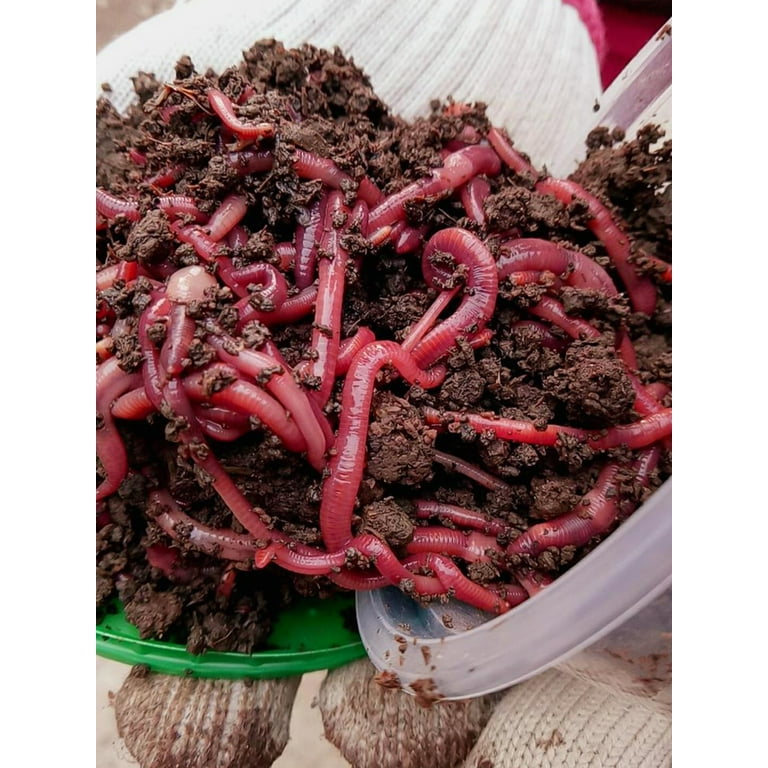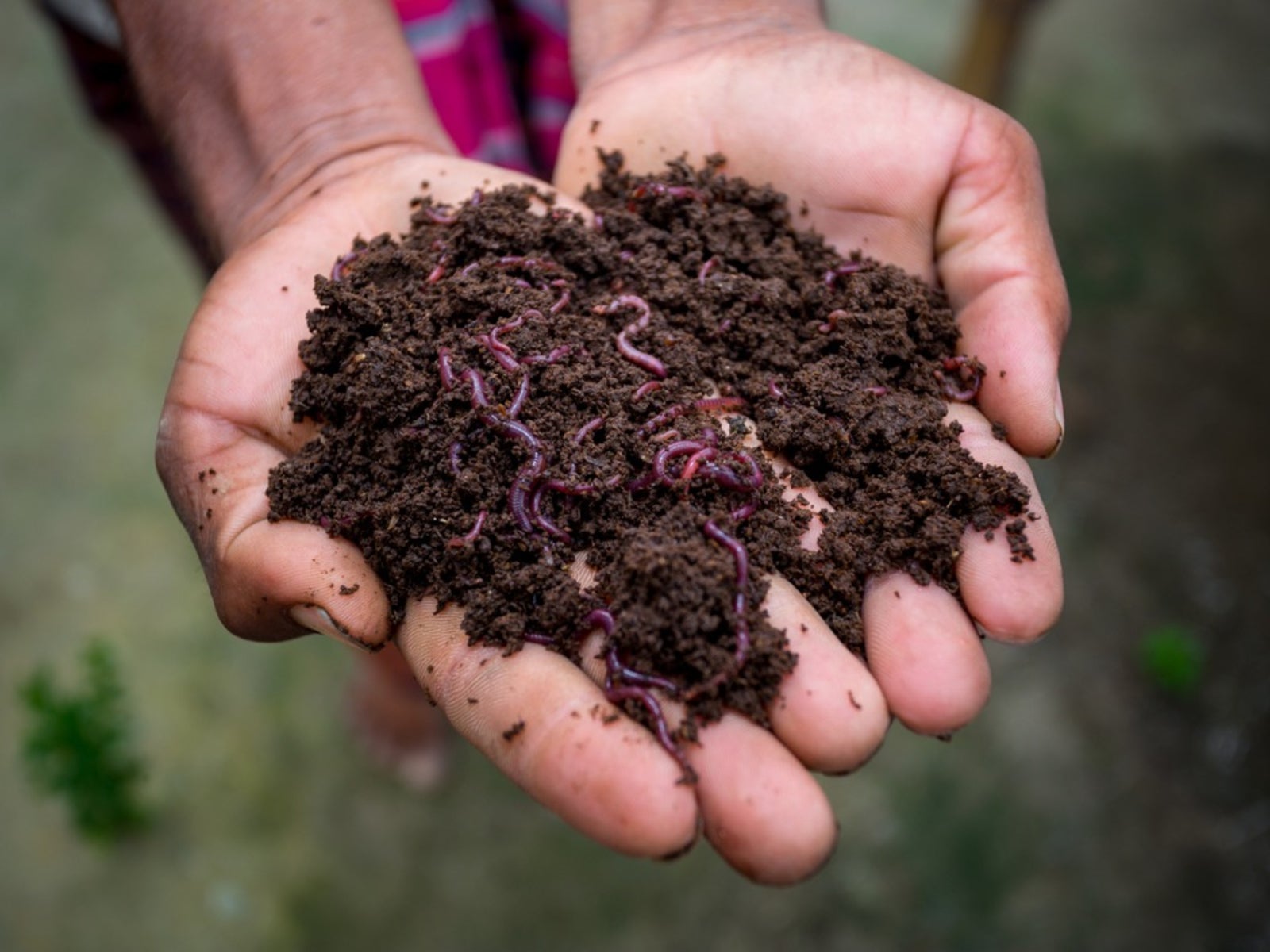The Ultimate Red Wiggler Composting Checklist for Successful Vermiculture
The Ultimate Red Wiggler Composting Checklist for Successful Vermiculture
Blog Article
Using the Power of Red Wiggler Composting: A Thorough Appearance at the Environmental and Agricultural Conveniences of This All-natural Waste Decrease Method
The technique of red wiggler composting represents an engaging junction of environmental stewardship and farming development, offering a lasting option to the expanding obstacles of waste monitoring and dirt destruction. Via the all-natural procedure of vermicomposting, natural waste is transformed right into a useful source that not just enriches dirt however also adds to a significant decrease in landfill contributions and greenhouse gas discharges. As we explore the complex advantages of this approach, we uncover exactly how it can improve agricultural practices and promote environmental understanding, triggering a more detailed examination of its prospective influence on our neighborhoods and communities.
What Are Red Wiggler Worms?
Red wiggler worms, medically referred to as Eisenia fetida, are a types of earthworm especially adjusted for composting and organic waste malfunction. These worms thrive in the nutrient-rich atmosphere of breaking down raw material, making them excellent for vermicomposting systems. Growing to a size of around 3 to 4 inches, red wigglers are defined by their reddish-brown coloration and unique banding patterns along their bodies.
Unlike other earthworm types, red wigglers like to inhabit the top layers of dirt and organic debris, where oxygen degrees are higher and food resources are plentiful. Their physiological adaptations enable them to process natural materials successfully; they have a well-developed digestive system that enables them to transform waste right into nutrient-rich spreadings, typically referred to as "black gold" in gardening and farming contexts.
Eisenia fetida plays an important duty in the environment by helping with the disintegration process, boosting soil structure, and advertising microbial task. Given their unique features and environmental significance, red wiggler worms have actually ended up being a central component in sustainable waste monitoring practices and organic gardening efforts, contributing considerably to ecological health and wellness.
Advantages for Soil Health And Wellness
The inclusion of red wiggler worms in composting systems supplies considerable advantages for soil health and wellness. These worms play an essential role in the decomposition procedure, damaging down natural matter into nutrient-rich vermicompost. This all-natural plant food enhances dirt water, aeration, and framework retention, contributing to an extra positive setting for plant growth.
Vermicompost is rich in vital nutrients such as nitrogen, potassium, and phosphorus, which are important for plant advancement (Red Wiggler Composting). The visibility of useful bacteria in vermicompost further promotes soil health by boosting nutrient schedule and suppressing soil-borne pathogens. This vibrant communication cultivates a robust dirt ecological community that sustains lasting farming techniques
Additionally, red wigglers help with the formation of humus, a steady natural matter that boosts soil fertility and durability. This enhanced organic web content not only enhances dirt appearance yet also improves its ability to sequester carbon, alleviating environment modification influences.
Incorporating red wiggler composting right into agricultural systems can, as a result, bring about much healthier dirts, greater plant yields, and improved sustainability. Because of this, accepting this all-natural waste reduction method can produce profound advantages for both the atmosphere and agricultural performance.
Effect On Waste Decrease
Incorporating red wiggler worms into composting systems considerably lowers waste, changing organic products that would certainly otherwise add to land fills into beneficial compost. This technique, called vermicomposting, effectively refines kitchen scraps, backyard waste, and other biodegradable materials, leading to a considerable decrease in the quantity of waste sent out to garbage dumps. According to the Epa, organic waste consists of a considerable portion of landfill contents, creating harmful greenhouse gases as it decomposes anaerobically.
By using red wigglers, an extremely reliable composting representative, businesses and families can draw away a considerable quantity of organic waste from these land fills. Each pound of red wigglers can refine and consume concerning half a pound of organic waste daily, leading to an impressive decrease in overall waste generation.
Moreover, the application of vermicomposting supports local waste monitoring initiatives and advertises a circular economic climate, in which waste is transformed right see this website into a source. As areas increasingly adopt this practice, the collective result on waste decrease ends up being obvious, cultivating a more lasting environment and motivating accountable waste administration techniques. Embracing red wiggler composting not only minimizes waste problems yet also boosts neighborhood recognition about sustainable living.
Enhancing Agricultural Practices
Making use of red wiggler worms in farming methods can dramatically improve soil wellness and plant productivity. These worms play a crucial function in the composting process, breaking down raw material into nutrient-rich vermicompost. This natural plant food improves soil oygenation, structure, and water retention, which are necessary for durable plant development.
In addition, the spreadings produced by red wigglers are abundant in necessary nutrients, such as phosphorus, nitrogen, and potassium, promoting much healthier plants with greater yields. The microbial task stimulated by these worms likewise contributes to a successful soil community, enhancing biodiversity and strength against illness and bugs.

Additionally, making use of vermicompost can enhance soil pH levels, making nutrients more accessible to plants. Red Wiggler Composting. Because of this, farmers can grow much healthier crops while simultaneously contributing to dirt preservation efforts, eventually creating a more sustainable farming future
Obtaining Began With Composting
The key ingredient in red wiggler composting is natural waste, which can include cooking area scraps, backyard waste, and paper items. This equilibrium cultivates an optimum environment for red wigglers, which are the key organisms in this composting technique.
Choosing a proper composting system is similarly essential. Worm containers can be made for indoor or outdoor usage, and they ought to give ample water drainage and oygenation. It is encouraged to begin with a little number of worms-- about one extra pound of red wigglers for every one extra pound of waste generated regular.

Conclusion

The technique of red wiggler composting stands for an engaging junction of ecological stewardship and agricultural innovation, using a lasting option to the expanding difficulties of waste management and dirt destruction.Additionally, the application of vermicomposting supports regional waste management efforts and promotes a round economic situation, in which waste is changed into a resource. As communities progressively adopt this technique, the collective effect on waste decrease comes to be evident, cultivating a much more lasting environment and encouraging accountable waste administration practices. The main ingredient in red wiggler composting is organic waste, which can include kitchen area scraps, yard waste, and paper items.In summary, red wiggler composting offers a lasting service for natural waste administration, yielding nutrient-rich vermicompost that dramatically boosts soil wellness.
Report this page